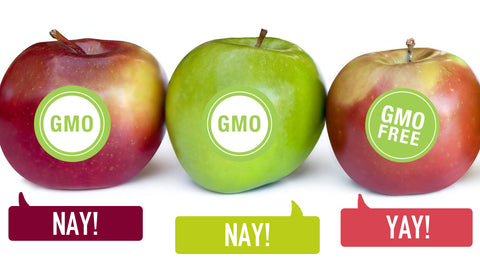By the Rise Bar Staff (because we care about the stuff you put into your body)
 There’s a lot of buzz about the organic label. According to the officials at the US Department of Agriculture, organic standards govern how farmers grow crops and raise animals – and these same rules are also what help make sure your food stays organic from the farm to the plate. Organic foods also require that no genetically modified organisms (GMOs) be used during the creation or packaging process of creating a product. While an organic food item is generally free of GMOs, it’s not always for certain – so it’s best to check the package for both an organic label and a non-GMO label.
There’s a lot of buzz about the organic label. According to the officials at the US Department of Agriculture, organic standards govern how farmers grow crops and raise animals – and these same rules are also what help make sure your food stays organic from the farm to the plate. Organic foods also require that no genetically modified organisms (GMOs) be used during the creation or packaging process of creating a product. While an organic food item is generally free of GMOs, it’s not always for certain – so it’s best to check the package for both an organic label and a non-GMO label.
GMOs in general are plants or animals that have been modified with a combination of different genes from other sources. There is no scientific consensus that GMOs are completely safe, and in fact, a number of developed countries, such as a group of European Union nations, have banned GMO crops and placed labeling restrictions on them so that people know exactly what it is that they are eating. In the United States, however, people are now beginning to take initiative to find out what exactly is in our foods at the supermarket and beyond.
According to the USDA, producers of organic foods must ensure that they preserve natural resources and biodiversity, support animal health, and provide access to the outdoors so that animals can exercise natural behaviors. They must also use non-genetically modified ingredients, be open to on-site inspections, and maintain separation of organic foods from non-organic foods so that cross-contamination does not occur.
This labeling can sometimes be too broad of a definition. For example, egg farming is a good example of how labeling doesn’t tell the full story. Eggs with a certified organic label require that the birds be un-caged inside barns, but there are no requirements on how long a hen is allowed to spend outdoors or what kind of quality outdoor time is accessible. Even beak-cutting and starvation techniques for maximum egg production are still permissible for hens that produce certified organic eggs. The free-range label, on the other hand, is partially defined by the USDA but has no official standards in egg production, so there is no generally accepted standard for an egg to be labeled free range.
With these ideas in mind, organic along with non-GMO are definitely key labels to watch out for. But they’re not the be-all, end-all. There are plenty of other considerations we need to take into account when purchasing food and making the important decision of deciding what with what kinds of nutrients we want to nourish our bodies. It’s just one step closer to making sure we have the correct information we need in order to make healthy choices.
Information from the USDA Website and the Humane Society




